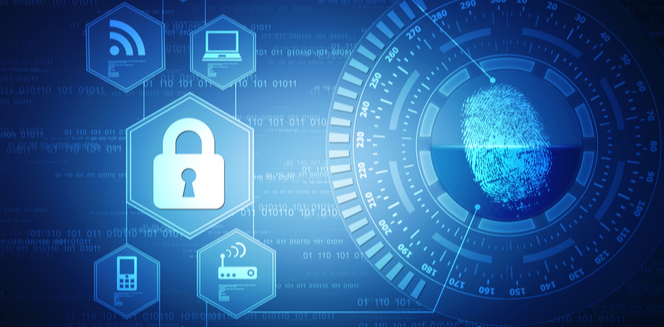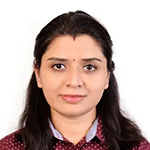New R&D activities to present game-changing opportunities in forensic technology

20 Nov
2019
From utilizing artificial intelligence for determining bullet trajectory in body and various related aspects to finding sex of a deceased based on skull, ongoing activities will solve different problems and present answers to questions that were unanswered before.
Technology has penetrated in the field of medical science and it has been utilized in different ways. The recent research and development activities outline the importance of forensic technology in gaining important information regarding various aspects of human body. From utilizing artificial intelligence for determining bullet trajectory in body and various related aspects to finding sex of a deceased based on skull, ongoing activities will solve different problems and present answers to questions that were unanswered before. The forensic technology industry will revolutionize the current scenario in coming years. According to the report published by Allied Market Research, the forensic technology market is expected to reach $22.90 billion by 2023. Following are some of the recent activities taking place in the industry:
Research and development activities that utilize machine learning algorithms and artificial intelligence can become game-changing in the next few years. The Victorian Institute of Forensic Medicine (VIFM), also operating as Monash University’s Department of Forensic Medicine, carries out autopsy services for deaths taking place at Victorian State Coroner. It contains data related to scans of nearly 75,000 full-body computed tomography (CT). This collection increases with addition of nearly 7,00 cases each year. The database has more than two million photographs including pathological conditions, internal & external injuries, and full-body images. Chris Bain, the Monash’s Professor from the Faculty of IT discovered the possibilities of machine learning and artificial intelligence (AI). He realized this database can become a game-changing information. Professor Bain outlined that they have been trying to build a huge library with a vision to advance science of forensic medicine with great computational power. Among the four projects that have been going on with collaboration, Leidos, an IT and biomedical research company, invested $150,000 in the project on bullet trajectories. A team has been working on the project by using machine learning for creation of digital 3D model of human anatomy, entry and exit wounds. The photographs from database serves as raw material, and algorithms for mapping trajectories, determine bullet fragments, and identify the range from which the firing of gun took place. Professor Bain highlighted that machine learning will be used to determine repetitive patterns regarding the outcome of bullet injuries. This project will be utilized for military health applications.
The development of new technologies is ongoing and the technology to determine gender of victims of war who have less remaining features. A refugee who built a life in Scotland after fleeing from war developed this technology. Rawad Qaq fled Syria and reached Germany. Then he gained scholarship to pursue PhD in forensic dentistry at the University of Dundee after completion of Masters. He grabbed this opportunity for development of facial reconstruction technology for identifying war victims. He developed free-to-use sex calculator that enables forensic scientists to utilize skulls for determining gender of deceased people. He plans to develop methods of identification in Syria and other neighboring countries. He added that skull is the second-best sex indicator after pelvis. In extreme conditions, forensic professionals might only have a skull and find solutions to the problems faced in the field. The sex calculator enables experts to determine sex with accuracy of nearly 80%.
For developing this calculator, 22 common measurements were tested on 135 skull radiographs. Following the statistical analysis, only four measurements were necessary for accurately differentiating male and female. Then Mr. Qaq’s team used this formula for 15 new samples and determined the sex of 13 samples correctly, which represents nearly 86% of accuracy. This shows that this technology would become vital in forensic science in war-torn nations. Moreover, it would help developing nations that have been facing challenges regarding identification.

Rosy Behera
Author's Bio- Rosy Behera holds a bachelor’s degree in Electrical and Electronics Engineering and now she is a content writer by profession. She loves to portray her thoughts and ideas with a nice command of words. Grabbing an audience with her creative write-ups is one of her biggest assets so far. Apart from writing, she is a certified “Odisi” dancer and has done Gardharva in Drawing, Painting, and Arts. She always explores new things through travel and is a big foodie.
Use of Blood Plasma Derivatives Has Now Become Prevalent in Regenerative Medicine Therapies
Avenue: Entire Library membership of Allied Market Research Reports at your disposal
- Avenue is an innovative subscription-based online report database.
- Avail an online access to the entire library of syndicated reports on more than 2,000 niche industries and company profiles on more than 12,000 firms across 11 domains.
- A cost-effective model tailored for entrepreneurs, investors, and students & researchers at universities.
- Request customizations, suggest new reports, and avail analyst support as per your requirements.
- Get an access to the library of reports at any time from any device and anywhere.
Related Post
-
How are Submarine Cables Transforming Global Connectivity with Enhanced User Experience?
-
Endoscopy Procedures: Transformations in Techniques and Applications
-
AI-Powered Video Analytics: How the Product Actually Works for enterprises
-
Painting Robots: Transforming Precision Coating and Creative Applications
-
Innovations in Pharmacovigilance Systems Advancing Patient Safety
-
Understanding Edge Security: Keeping Data Safe Near the Source
-
Exploring the Use and Advancements of 3D Laser Scanners in Professional Applications
-
Reinforcing Industrial Controls with Smarter Tools and Training








